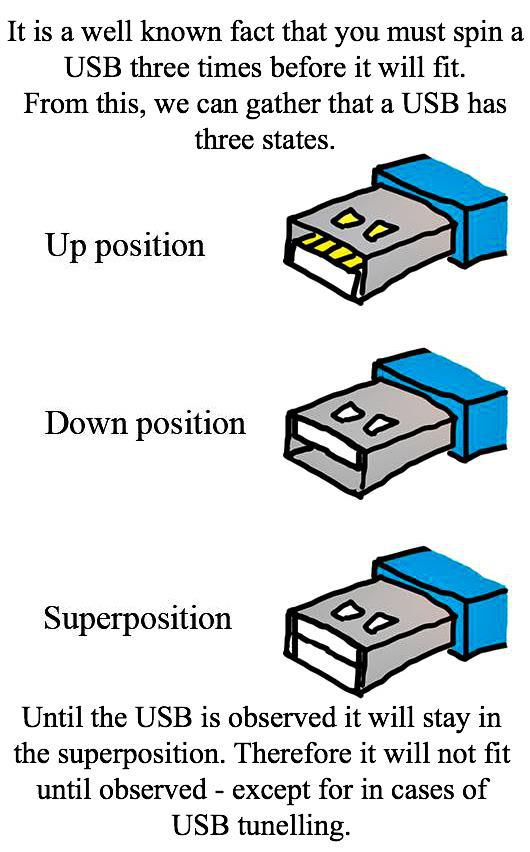According to the news today we’ll soon be able to wave goodbye to that frustrating feeling when you have to check the USB port or the connector to see if it’s the right way up or not. Some have even likened current USB cables to the famous ‘Schrodinger’s Cat’ thought experiment, claiming that until examined, the connector is in a ‘superstate’ where both the top and bottom of the connector are occupied by the contact pins. Check the comic below.

The new USB port, USB Type-C, allows you to plug in your connector any way up you see fit, without fumbling around for a while feeling silly until it works. It’s about the same size as the smaller micro USB connector, and apparently it’s also twice as fast as USB 3.0. Great news for techies everywhere.
SEE ALSO: EE Offers Pocket Power for Festival Goers with Portable USB Charger
Although the new port type isn’t going to be around soon, meaning you’ll have to use a converter, it could soon be available on new devices as the standard becomes more widespread. USB Type-C has also been designed for longevity, meaning it can be scaled with future developments in speed. As devices require faster speeds, the connector won’t need to change. This ensures that, once on the scene, USB Type-C won’t need to be changed or updated for a long time to come.
But how does it work, we hear you cry. Well, it’s similar to Apple’s Lightning connector, being that it’s symmetrical. Whichever way you plug it in, both contacts on the connector and the port will sync up, creating the connection. The shape of the connector is completely reversible, it really doesn’t matter how you plug it in.
The contacts also facilitate those fast speeds, up to 10 Gbps data transfer rate, which may mean the device might cause a resurgence in cable connections as tablets and games consoles require these fast data transfer rates when attached to other devices in order to keep transfer lag to a minimum.
SEE ALSO: Apple May Switch Headphone Jack With Lightning
The new USB Type-C connector hasn’t been slated for any kind of definitive release, but, judging by the speed at which USB 3.0 arrived on new devices after it was introduced, we may have to wait a while, maybe even up to or beyond a year, before we see the device and cable employed for common use in devices.
Source: CNET

